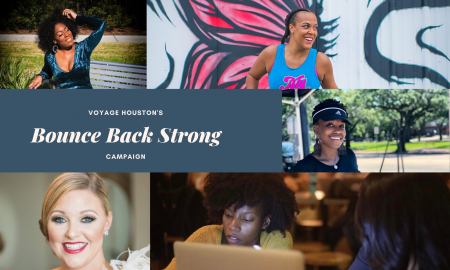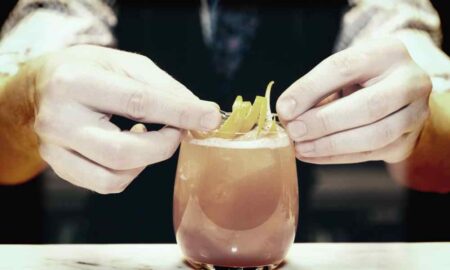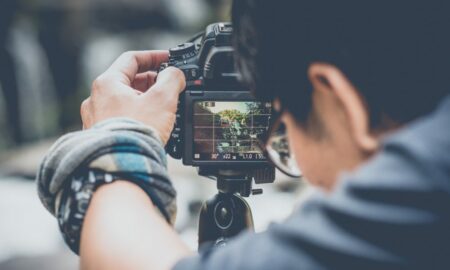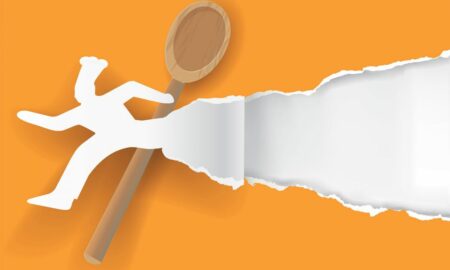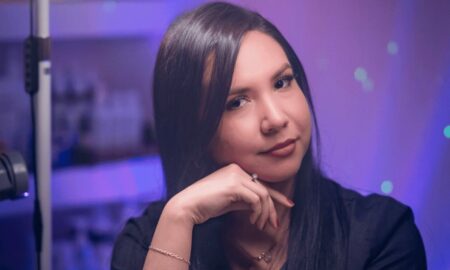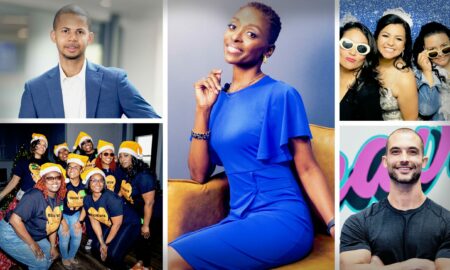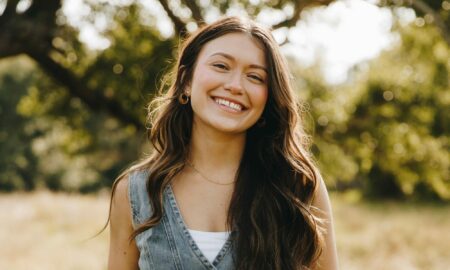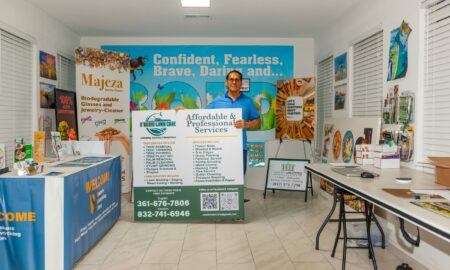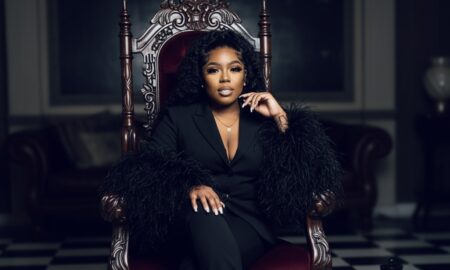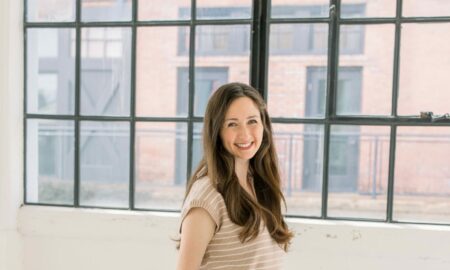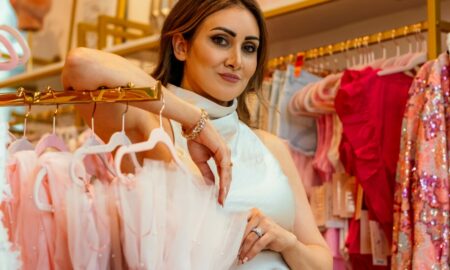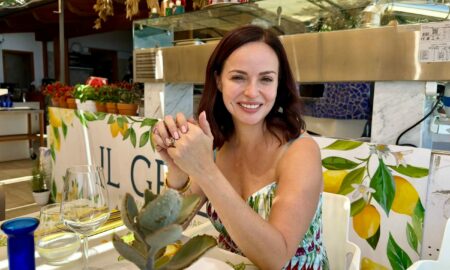

Today we’d like to introduce you to Lydia Bodnar-Balahutrak.
Lydia, can you briefly walk us through your story – how you started and how you got to where you are today.
I am an artist and educator. I was born in Cleveland, Ohio to World War II refugees from Ukraine, and grew up in a European immigrant community. I loved the multi-cultural neighborhood I was raised in, learning my friends’ languages and histories, as well as cultivating and sharing my own ancestral heritage. In my family not a day went by without engaging in some measure of creative work — embroidery, sewing, baking, singing, reciting poetry, planting gardens — To this day, I carry my own particular cultural mix into my creative endeavors. The artwork could be lyrical or satirical. It could be a drawing, a painting, mixed media, small or large. In each one, I probe individual identity and cultural ties, piece together fragments of text and figuration, and invite discourse about one’s place in the world.
After completing graduate studies at The Corcoran and The George Washington University in Washington, D.C. with an MFA degree in painting, I married and moved to Houston in 1977. It was a wonderful surprise to find Houston to be such a cosmopolitan city, with a diverse growing population. My engineer husband Michael and I found a 1930’s house near Rice University, re-built it, and later added a garage workshop and studio in the backyard. We feel very lucky to have a home and workplace in the heart of this vibrant city.
We’re always bombarded by how great it is to pursue your passion, etc. – but we’ve spoken with enough people to know that it’s not always easy. Overall, would you say things have been easy for you?
Moving to Houston, far away from family and friends, fresh from graduate school, and newly married, presented some challenges. Luckily, the Houston art community was building and creating professional opportunities for incoming artists. Organizations like the Women’s Caucus for Art and the Art League of Houston provided friendships and support. Commercial galleries and alternative exhibition spaces were opening up, college art departments and the Museum of Fine Arts and its School of Art were seeking artists and developing their institutions.
But it was 1991 that was the biggest turning point in my creative work and my worldview! An IREX grant enabled me to travel to Ukraine for the first time. The trip opened my eyes and heart to a long-suffering yet hopeful people, to a land beautiful but ravaged by the Soviet system. A concern with the human condition — always at the heart of my art — took new form and urgency. Shortly after that, in 1991, the Soviet Union collapsed, and Ukraine became an independent sovereign country. Subsequent trips included a 1996 visit to the Chornobyl Zone, artist-residencies at the L’viv and Kyiv Fine Art Academies, and a 2-month long travel throughout Ukraine in the summer of 2017, teaching English to children at GoCamp summer schools.
So let’s switch gears a bit and go into the Lydia Bodnar-Balahutrak, artist and educator, The Glassell School of Art, Museum of Fine Arts, Houston story. Tell us more about the business.
Since 2008, I’ve been teaching studio classes, namely figure drawing and painting at the Glassell School of Art, the Museum of Fine Arts, Houston. My early artwork was focused on the human figure. When I teach my classes, I am still awed by the narrative possibilities and complexity of the human form, and the students’ dedication to this subject.
Workshops I offer at Glassell that reference specific aspects of artmaking include this semester’s “Word and Image”. Students investigate uses of text with imagery for purposes of storytelling, political/social commentary, or for abstract formal compositions.
The Glassell students have enriched my own engagement with cultural issues and language. They range from college students to retired folks, they come from all walks of life, from all over the world. They bring to class a wealth of ideas and points of view. We all benefit from this creative exchange.
As a professional artist, I have participated in a number of curated, cataloged, and touring national and international shows, including a 10-year survey at the Pearl Fincher Museum in 2011, and solo shows at Fletcher-Sinclair Historic Mansion in NYC, Galveston Arts Center, and Lone Star College-Kingwood, which produced a video interview:
Lydia Bodnar-Balahutrak’s ‘Dialogues’ at Lone Star College-Kingwood …
▶ 20:19
https://www.youtube.com/watch?v=Cm9sD4xP-WU
A monograph of my art was published in 2005.
My work can be found in several private and museum collection, among these the Art Museum of South Texas, Corpus Christi, and UIA, NYC.
My creative art process involves collage, which is a way of piecing things together. I collect newspaper and magazine clippings, save treasured mementos, keep bits of cultural artifacts, then select and arrange them onto canvas, panel, or paper. The collages build up over time, thematically and physically, and eventually become grounds upon which I paint and draw imagery. Some elements are concealed, others revealed. I examine the nature of print media, how information is disseminated — how stories submerge, resurface, and unravel over time.
The “Nests” series are small 9″x9″ works on paper incorporating monetary currency, postage stamps, handwritten letters, embroideries and weaving their symbolism with images of nests and animals enacting fable-like parables. Large works, up to 12″ high, collectively titled” Hide and Seek”, use recurring motifs of trees and tangles of branches and vines, inspired by what I witnessed in the Chornobyl Zone in 1996, ten years after the nuclear explosion. Despite everything, even in the face of deception, destruction, and loss, I saw nature regenerating life and creating anew — and that has stayed with me — that note of grace and optimism.
Has luck played a meaningful role in your life and business?
I have been lucky to have had loving parents and grandparents, and now a wonderful husband. They have always supported my commitment to art. they have also instilled in me a reverence for freedom. They were forced to flee their nation but were so grateful to become citizens of this country. They worked hard and provided my brother and me with a good education and a firm understanding of the gift we had: living in a democratic, free country. Others were not so lucky.
Today, I am very concerned about the deepening divides in our country. Have we become complacent to what is happening around us? We should not take our gifts for granted, but, when necessary, speak truth to power, Through open discourse, in word and image, we can sustain our luck of living in a country of true democracy, free expression and human rights, respect and compassion.
Contact Info:
- Website: www.LydiaBodnarBalahutrak.com









Getting in touch: VoyageHouston is built on recommendations from the community; it’s how we uncover hidden gems, so if you know someone who deserves recognition please let us know here.


